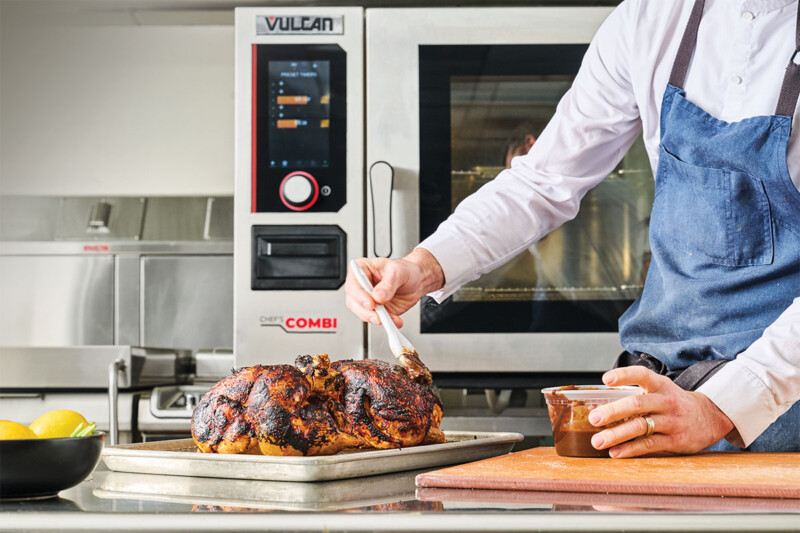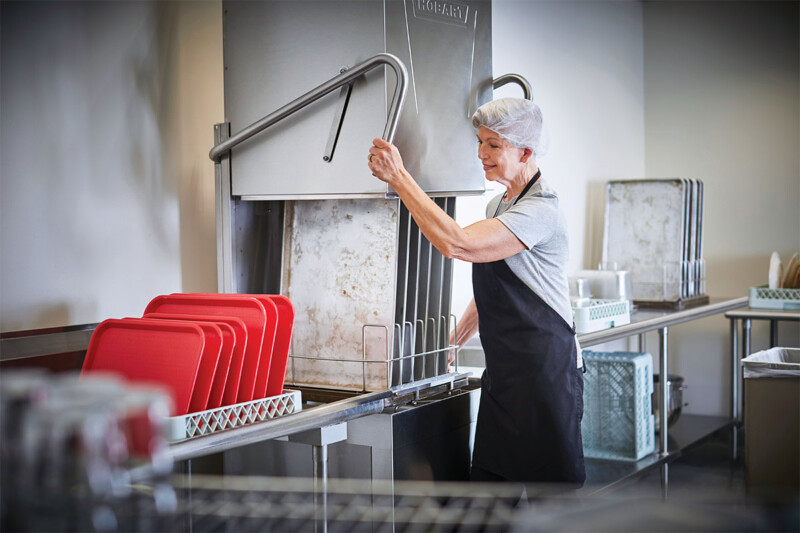Tips For Finding The Right Water-Filtration System
Water is the lifeblood of the commercial kitchen, where gallons and gallons flow through expensive equipment and land in the cups of your customers. Although water looks deceptively clear, it contains substances that can affect the taste of everything from soups to sodas and cause thousands of dollars in equipment damage if not managed.
Protect your equipment investments and keep customers coming back by ensuring good water quality through well-chosen filtration systems. There’s no one-size-fits-all solution: Your filter specification depends on the local water quality—to the street level, in some cases—the types of kitchen equipment using water, how you would like your customers to experience the taste, smell and look of your water as well as the recipes it’s used in. Professionals can help you specify a filtration system that balances all of these requirements, but you still need to know the basics to effectively manage your water quality.
What’s In Your Water?
Before you can decide what kind of filters your operation will need, you should know what’s in your water. Find out about your regional water quality either by accessing your municipality’s annual report or having your water tested, which delivers the most accurate results.
Common offenders include:
• Sediment. Dirt, including mud, twigs, small stones and other organic matter, is common in water, and it can affect taste and cause beverages to appear cloudy.
• Total dissolved solids (TDS). Water holds dissolved minerals and metals, such as magnesium, calcium, zinc, iron and other organic materials, in suspension called TDS. Water “hardness” is a measure of TDS content. Water also can contain alkaline substances, such as bicarbonate. Water’s alkalinity determines how easily the minerals and other TDS will form scale. To a degree, TDS will impart taste and odor to water, but the bigger danger is their effect on kitchen equipment. As water heats, the minerals precipitate and cling to the equipment; we know this more commonly as scale or “lime” buildup.
When scale coats heating-element surfaces in coffee brewers, steamers, combi ovens or dishmachines, your equipment isn’t brewing, cooking or cleaning properly.
• Volatile organic compounds (VOCs). VOCs can make water taste and smell “off.” Those “off” elements can transfer to all of the beverages you make with your water.
• Chemicals. Municipalities deliberately add chlorine and chloramines to water to kill microorganisms and make it safe to drink. But they cause beverages to taste and smell funny, too. They’re also corrosive and can damage any equipment using water: ice machines, steamers, combi ovens, coffee and tea brewers, espresso machines, etc.
• Pathogens. Although chlorine and other chemicals typically destroy pathogens that can make your customers sick, it’s possible that some cysts, bacteria and viruses can enter your water supply.
If water is sourced from groundwater, such as wells, it can contain large amounts of TDS; high levels of TDS categorize water as “hard.” When water is sourced from surface water, such as lakes and rivers, the water is “softer” but subject to runoff contaminates, such as pesticides, dirt, heavy metals and microorganisms.
Filtration companies will use the water-quality report to estimate what kinds of challenges water may cause your kitchen. Typically, the key areas you’ll want to address are: TDS, sediments and chemicals in the water and their effect on taste and odor, health and safety and equipment.
Tailored To Your Needs
Next, consider the kinds of equipment that will be using water in your kitchen because different applications require various levels of water quality. For example, if an ice machine uses water that contains a lot of minerals, it will produce fast-melting ice. Espresso machines, combi ovens and steamers need special filters to prevent mineral-infused water from creating scale buildup on their heating elements. General scale-inhibiting filters can make soda taste funny, so fountain dispensers require their own specific filters. As a result, there’s a vast assortment of water filters available.
Filter Types
The first line of defense for sediment is the mechanical filter, of which there are two main types. Depth filters capture impurities ranging between 5-20 microns throughout the depth of the filter medium. Surface filters capture smaller impurities on the surface of a filter membrane, typically to about 0.1 micron.
Although local utilities already treat water, it’s important that your water-filtration system offers backup protection in case any dangerous bacteria, viruses or cysts slip through the treatment plant. Ultrafiltration membrane systems can capture these microscopic organisms to 0.01 micron and offer a secondary defense to keep customers healthy and safe.
While the U.S. Environmental Protection Agency requires that all local water utilities treat water with disinfectants, such as chlorine, to kill microorganisms that can cause illnesses, chlorine can add an undesirable “swimming pool” taste to beverages and ice.
Carbon filters, which are a form of mechanical depth filter, remove VOCs, metal ions such as lead and arsenic and chemicals such as chlorine, purifying the smell and taste of water. If you have more than one unit location, you’ll want to consider how carbon filters and regional water quality will affect taste consistency across your chain. Carbon filters also filter out chemicals that corrode metals, a bonus for water-using equipment.
Weighing Scale Systems
There are many ways to prevent scale, but the methods often must be customized for each application. For instance, ion exchangers, also known as water softeners, can reduce scale formation, but they also can make water taste salty, affecting the quality of coffee, tea and carbonated beverages. Scale inhibitors, such as polyphosphates, also are available; they bind with minerals and cause them to suspend in water rather than adhere to equipment components. The most common polyphosphates work well in temperatures up to 150°F; at higher temps, they can make beverages cloudy, but they’re fine for the dishmachine. For beverage equipment heating water to higher temperatures, such as espresso machines, you need polyphosphates designed for those applications.
Other scale inhibitors work by reversing the polarity of minerals, including calcium and magnesium. This causes the minerals to form into crystals that break off from the inhibitor material and suspend in the water rather than clumping together as scale buildup on equipment components. These polarity-reversing inhibitors aren’t affected by temperature, so they work well in high-heat water applications, such as espresso machines and steamers and combis that have flush cycles.
Know Your Options
Additionally, a good water-filtration system needs to be cost effective and manageable for your business; it makes no sense to invest in a system that your employees can’t or won’t maintain. One variable is placement: Filters can be installed at point-of-use—directly on the water line leading to the equipment—or point-of-entry, meaning that all of the water coming into the kitchen will be custom-filtered consistently.
A popular option is to design a spot for a system that centralizes multiple point-of-use filtration lines and can be serviced easily. Otherwise, employees frequently forget to change filters hidden from plain sight. It’s imperative to understand how often filters need changing and schedule maintenance. In recent years, manufacturers have developed self-cleaning filters that reduce maintenance costs.
Beyond placement, you also should consider filters’ flow rates, how much water they allow through and their capacity to ensure water pressure reaches the intensity your equipment needs.
Lastly, keep in mind some third-party certification bodies verify that filters stand up to their manufacturers’ claims. For instance, NSF certification on a filter means that the system is structurally sound and the claims on a system’s label are true and not misleading.
Choosing the correct water-filtration system can be a daunting task. Plan for a water-filtration system early in your design, choose an established water-filtration company with a good reputation and use third-party-certified filters.
RELATED CONTENT
- Advertisement -
- Advertisement -
- Advertisement -
TRENDING NOW
- Advertisement -
- Advertisement -
- Advertisement -


